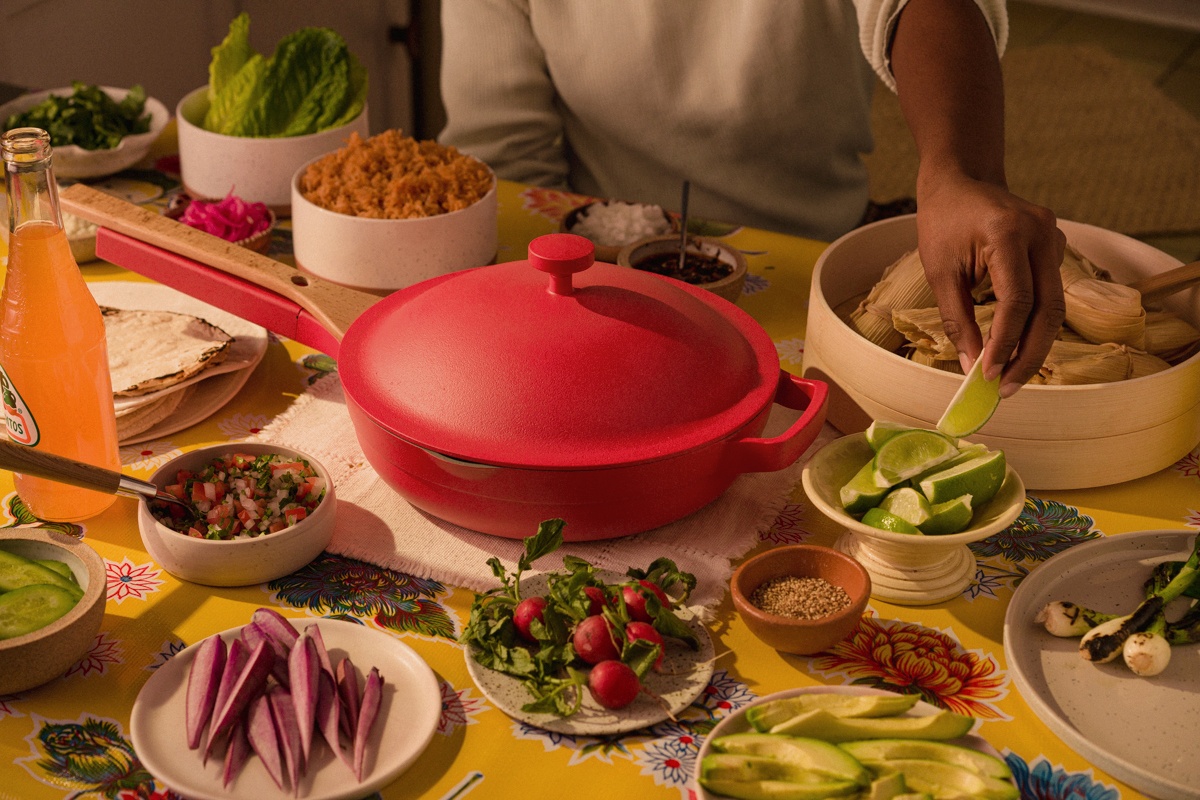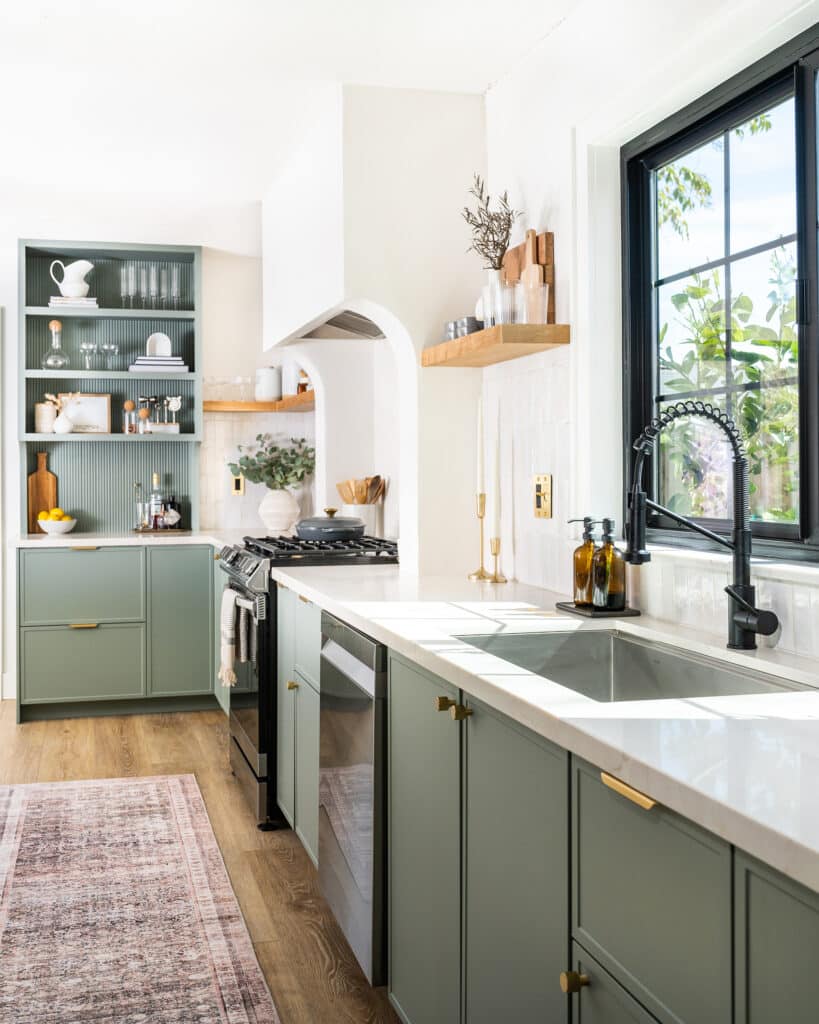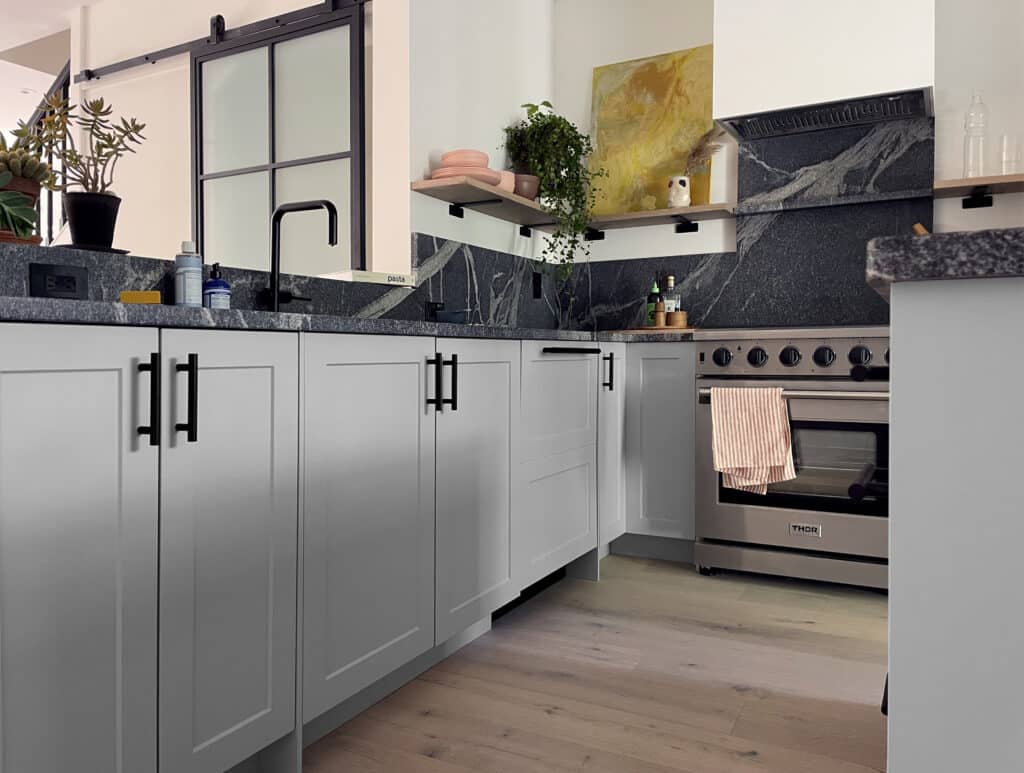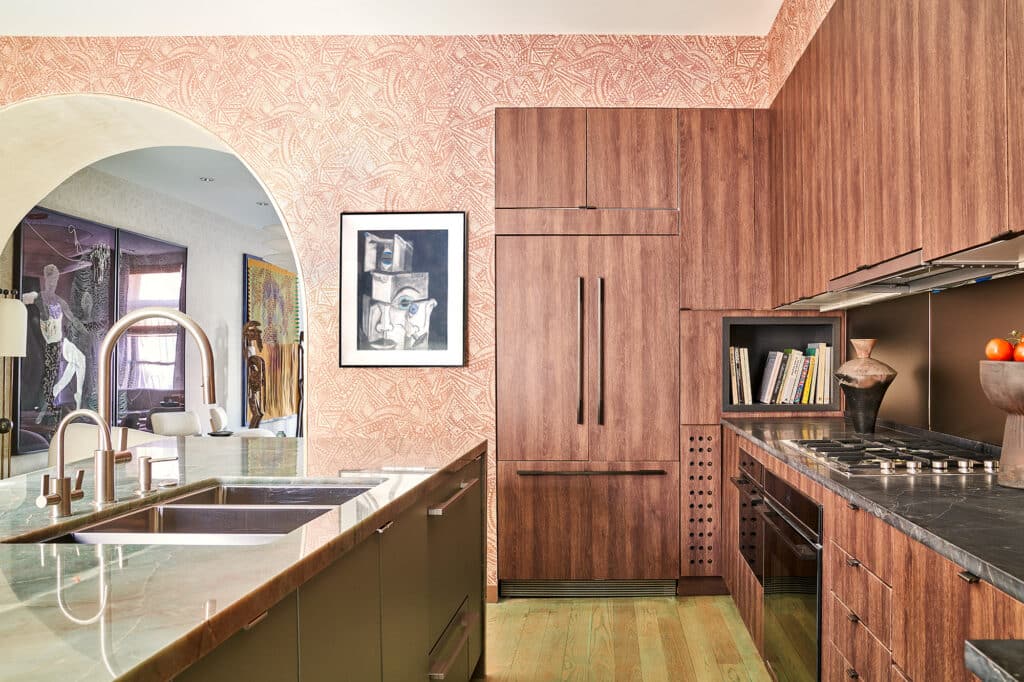Many of us turn to the organic section when buying apples and strawberries. We look for natural chemical-free cleaners that won’t irritate our lungs or cause diseases. But what about our pots and pans?
Do we stop to consider that the way we use them might be sending toxins into our air, food, and body? If you haven’t spent much time thinking about that, you’re not alone.
Fortunately, the women who run Wellness Within Your Walls, which educates interior designers on how to choose paints and other materials for a healthy home free of toxins, are shifting their focus to the kitchen these days. We rang founder Jillian Pritchard Cooke, and executive director Nonnie Preuss to learn about three ways to have a healthier kitchen in 2021.
Ditch the Plastics
We’ve been told to avoid plastics with BPA (short for bisphenol A), which is linked to hormonal changes and higher blood pressure in adults, as well as defects in developing babies. But even safer plastics can release chemicals into the food stored in them. And heating any plastic in the microwave (including takeout containers and plastic wrap) is a big no-no. Cooking involves using high heat and plastics can’t be submitted to these temperatures without emitting the component within them.
What to use instead: “Glass can be your storage and reheating go-to,” says Preuss. Instead of having a jumble of plastic containers and jars under the sink, invest in tempered glass storage. We like the glass containers by Pyrex and Weck that easily move from freezer to microwave to refrigerator.
Toss the Teflon
“We do not recommend non-stick coated pans because the vast majority of those coatings are an alphabet soup of things you want to avoid,” says Preuss. The big offender in old-school Teflon, which DuPont launched in 1946 are chemical PFAS. In the new generation of nonstick pans, PFAS have been replaced by PFOAs and PTFEs, which have a similar chemical structure and fill the air when heated at high cooking temperatures. A 2019 Good Housekeeping Institute study found that a typical nonstick pan starts emitting chemicals after just a couple of minutes on high heat, and the fumes can make cooks feel like they’re coming down with the flu (and even kill pet birds). The EPA says the PFAS class of nonstick chemicals is linked to low birth weight, cancers, immune effects, and thyroid problems.
What to use instead: Look for nonstick ceramic or vegetable-coated pans, which keep food from sticking with non-toxic surfaces. Our Place cookware is an example. Pritchard Cooke calls the brand’s top-selling product “a rock-star pan.” Other companies like Great Jones, GreenPan, Made In (which uses carbon steel) are naturally nonstick.
Be Careful with Cast Iron
Neither Preuss nor Pritchard-Cook suggest you should give up that prized cast-iron collection inherited from Grandma. In fact, the mineral that’s released by a cast iron pan can be beneficial for small children and pregnant women who may have iron-poor blood (though the good news is the leaching decreases as the pan ages). Seasoned cast iron is also naturally nonstick, another reason some people treat this type of cookware like black gold.
How to pamper your pan: Take the time to season your new cast iron pan before you start cooking with it. Always void cooking acidic foods, like tomato sauce, lemon curd, or tomato-based chili in cast iron. The acid causes the pan’s pores to open up and release more iron and possibly even lead. And don’t ever soak it in water or you risk ruining your pan’s seasoned finish. Scrub it, then let it dry in the oven, and oil it after every few uses. Put these tips and cooking strategies to use and you’ll have a healthier kitchen this month and all year long.








